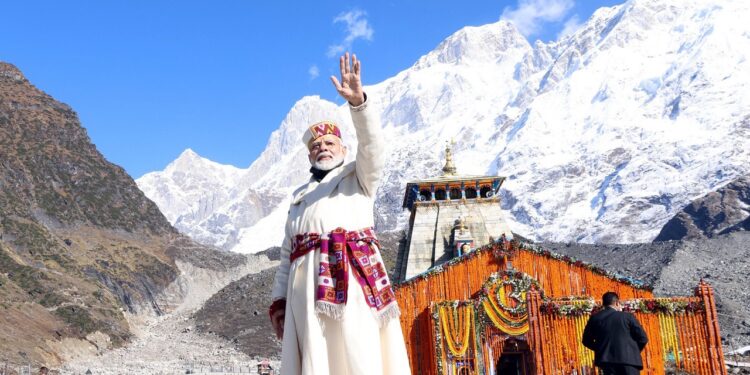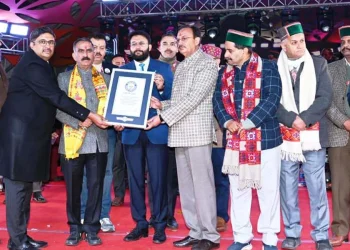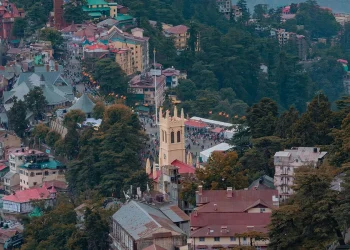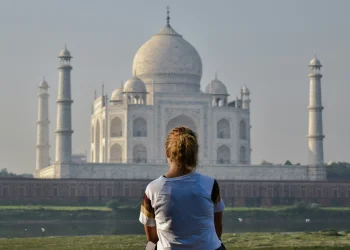Delhi: Prime Minister Narendra Modi on Friday laid the foundation stone for a ropeway to Kedarnath Shrine in Uttarakhand. The 9.7 km ropeway costing Rs 1267 crore will connect Gaurikund with Kedarnath and cut the journey time significantly. Earlier, the Prime Minister offered the first prayer at the inner sanctum and prayed before the Nandi.
Dressed in a traditional Uttarakhandi outfit, PM also offered prayers at Samadhi Sthal of Adi Shankaracharya. Uttarakhand Governor Gurmit Singh and Chief Minister Pushkar Singh Dhami accompanied the Prime Minister.
During his visit to Kedarnath, Modi reviewed the reconstruction and development works progress. Dhami provided Modi with an update on the progress of the project. PM also interacted with the workers engaged in the project before departing for Badrinath.
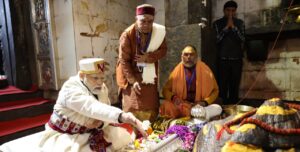
Prime Minister reviewed the Badrinath Master Plan’s progress and addressed a public meeting at Mana, approximately 5 km from Badrinath Dham.
In Mana, the Prime Minister laid the foundation stone for road and ropeway projects worth more than Rs 3400 crore.
The creation of the two ropeways, Kedarnath to Gaurikund and Hemkund, according to the Prime Minister, was inspired by the blessings of Baba Kedarnath, Badri Vishal, and Sikh Gurus. Addressing a gathering, Prime Minister said devotees worldwide would rejoice in this ground breaking initiative.
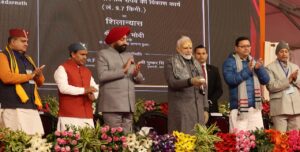
Highlights of Kedarnath and Hemkund Ropeways
The 9.7 km long Kedarnath Ropeway will connect Gaurikund to the Kedarnath shrine. The ropeway will reduce the travel time between the two places from 6-7 hours to just 30 minutes.
Hemkund ropeways will connect Govindghat to Hemkund Sahib and will be about 12.4 kilometres long. It will cut the journey from more than a day to 45 minutes.
To be built at a cumulative cost of around Rs 2430 crore, the two ropeways will be an environment-friendly mode of transport. Also, the journey will be safer, more secure and more stable. The development of this major infrastructure will increase religious tourism, thus boosting economic growth and creating numerous regional job opportunities.

The shrines of Kedarnath and Badrinath are the most important Hindu pilgrimage sites. The area is also home to Hemkund Sahib, a revered Sikh pilgrimage site. Prime Minister is committed to improving the accessibility and basic infrastructure of places of religious significance through implementing connectivity projects.
In Kedarnath, work under the first phase of reconstruction has been completed, while 21 works worth Rs 188 crores are currently underway and are expected to be completed by December 2023.
In a virtual review of Badrinath and Kedarnath’s reconstruction and development works last month, Modi stressed that the development of the surrounding areas is crucial to promote tourism in the region. With the growth of nearby locations, he predicted that the number of devotees to Kedarnath and Badrinath would increase rapidly.
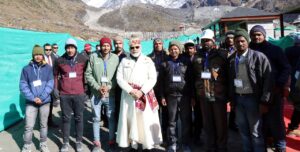
At 3,500 meters above sea level, Kedarnath is situated near the Mandakini river in the Rudraprayag district of Uttarakhand. According to legend, the Kedarnath shrine was built by Pandavas and revived by Adi Shankaracharya in the 18th century. In 2013 flash floods hit Kedarnath, and the town suffered massive damage.
A foundation stone for five reconstruction projects was laid in October 2017 at Kedarnath by Prime Minister Narendra Modi, including the Samadhi Sthal of Adi Shankaracharya, the founder of the Vedanta school of philosophy and an early eighth-century seer. PM Modi had also visited the Rudra meditation cave in Kedarnath in May 2019.
4.2 million undertook Char Dham Yatra in 2022
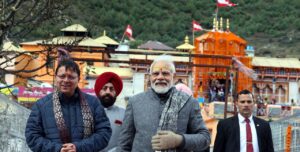
Each year, thousands of pilgrims visit Kedarnath, Badrinath, Yamunotri, and Gangotri shrines, collectively known as Char Dham. According to the available data, a record 4.2 million devotees visited the Char Dham shrines this year.
Char Dham Yatra begins at Yamunotri In the west. It continues to Gangotri and then to Kedarnath and Badrinath.

Founded in 2016, The Traveller Trails is a print and digital magazine and a trusted source for current news, trends, analysis, opinions, interesting blogs, videos and exclusive interviews from every corner of the world.



